柏孜克里克千佛洞
Bezeklik Thousand Buddha Caves - Bizaklik Thousand Buddha Caves
Useful Information
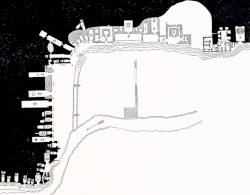
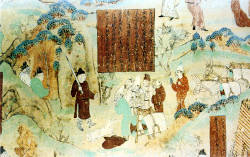
| Location: |
56 km northeast of Turpan.
(42.955489, 89.539675) |
| Open: |
All year daily 9-19. [2025] |
| Fee: |
Adults CNY 40. [2025] |
| Classification: |
 Cave Church,
Buddhist cave temples Cave Church,
Buddhist cave temples
|
| Light: | |
| Dimension: | |
| Guided tours: | |
| Photography: | |
| Accessibility: | |
| Bibliography: |
Albert von Le Coq ():
Buried Treasures of Chinese Turkestan,
Albert von Le Coq (1922): Die Buddhistische Spätantike in Mittelasien Ergebnisse der Kgl. preussischen Turfan-Expeditionen Germany / Berlin, 5 Volumes NII “Digital Silk Road” / Toyo Bunko. online DOI |
| Address: | Bezeklik Thousand Buddha Caves. |
| As far as we know this information was accurate when it was published (see years in brackets), but may have changed since then. Please check rates and details directly with the companies in question if you need more recent info. |
|
History
| 317-589 | first cave built during Northern and Southern dynasties. |
| 1279-1368 | last caves built during Yuan dynasty. |
| 1905 | murals removed by Albert von Le Coq. |
| 1961 | became cultural spot under State protection. |
| 1980 | 134 lines of sutras and ink books with color illustrations of Manichaeism in Sogdian language discovered. |
| 1982 | listed as a national key cultural relics protection unit by the State Council. |
Description
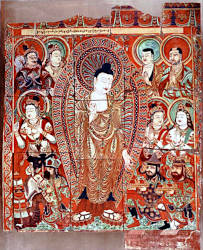
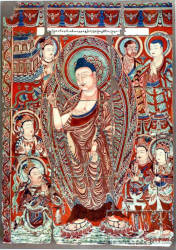
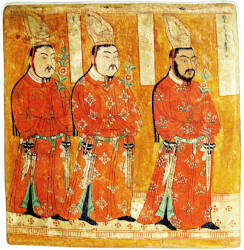
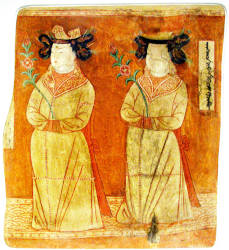
柏孜克里克千佛洞 (Bózīkèlǐkè Qiānfódòng, Bezeklik Thousand Buddha Caves) are 57 artificial caves, 40 of them contain murals of thousands of Buddhas. Bezeklik means "place where there are paintings" in the Uigur language. At this place is also the Royal Temple of the King of the Uighurs, which was built by the Xizhou Uighurs government of the 回鹘高昌 (Uighurs Gaochang, Gaochang Kingdom, 499-640). At this time the caves with murals were created, so many caves are actually more than 1500 years ago. And it was the earliest Buddhist cave art in China. The site was in use as a religious site from the 5th to 14th century. Many caves were created during the 5th and 6th centuries, after which the creation of new caves ceased. Later the site was extended again, during the 10th to 13th centuries under the West Uyghur Kingdom. Actually most preserved caves are from this era. But the Buddhist Uyghurs were converted to Islam by conquest during a ghazat (holy war). The Chagatai Khanate, also known as the Chagatai Ulus, under ruler Khizr Khoja who reigned 1389–1399, conquered the country. As a result, the site was abandoned. The conversion was so complete, they lost the memory of their ancestral legacy and falsely believed that the Kalmuks had built those Buddhist sites.
The caves are located in the cliff face of a long ridge of rather soft stone, which once had a monastery at its foot, an important center for Buddhist worship. A steep stairway led 10 m up to a narrow and winding path to the cliff top. The caves were built along this path. Today there is a broad walkway which allows easy access to the caves.
The caves are often rectangular rooms with a round arch ceiling. This ceiling is divided into quadratic fields, each of them containing the picture of a buddha. So the whole ceiling contains virtually hundreds of buddhas. Some larger fields contain a big buddha, surrounded by other figures and scenes. Other murals show people of the area, including Indians, Persians and Caucasians. As often with this kind of religious paintings, some are rather naive, others are artistically stunning, depending on the ability of the artist. Some faces even show the individual characteristics and the inner feelings of the figures. There are some traces of high quality murals, which are almost completely destroyed. To prevent further destruction, some caves are today protected by glas in front of the walls.
Some of the 1500-year-old murals are in superb condition, but unfortunately many others have either been destroyed by local Muslims or by foreign adventurer-explorers. The latter obviously did not destroy them, they removed them and took them to foreign countries, where they now can be seen in several museums. They can now be found in museums around the world, the Hermitage Museum in Saint Petersburg, Tokyo National Museum in Japan, the British Museum in London, and the National Museums of Korea and India. A digital recreation of the Bezeklik murals which were removed by explorers was shown in Japan. They also digitized the five books by Albert von Le Coq from 1922, where he describes his 1905 expedition in detail. See the link in the literature section for the download.
Although called a destroyer of paintings by some today, Albert von Le Coq and Theodor Bartus were the discoverers and conservers of the paintings. They discovered and explored the caves around 1905, after they had been abandoned for 700 years. The caves were used by goat herders, murals were destroyed by their fires. From the original 83 caves only 77 had survived, and only 57 still have their murals today. It took another half a century until the Chinese government startet to protect the place by declaring it a cultural spot under State protection. At the beginning of the 20th century it was common to save archaeological discoveries by removing them and relocating them to museums all over the world. This was ethical behaviour because it protected artworks which would have been destroyed in their original location. In this case many murals are now in the collection of the Museum für Indische Kunst (Museum of Indian Art), Staatliche Museen at Berlin, Germany. This was actually not that good, because of World War II. Numerous murals could not be removed for safekeeping and were thus destroyed when the museum was damaged in the bombing of Berlin by the Allies. The return of such artworks to the original countries is currently in the discussion, as many countries call the current owners thieves and vandals and demand the artworks to be returned. The Chinese websites even state that the Germans removed 90% of the murals, which is obvious nonsense as 57 of 87 caves still have their murals. In our opinion, this is not only untrue, but also aggressive and ignorant and ultimately a good argument that they are not adult enough to take care of this world heritage. Communist governments had a tradition of destroying artworks during the 20th century. They were not very open-minded towards religious art, as they regarded religion as ‘opium for the people’. We guess the approach to thank the current owner for saving and protecting it for so long and explaining how they will ensure the further preservation of the object would be a much better argument. As far as we know the museums all over the world are willing to return all artworks, as long as their future is safe.

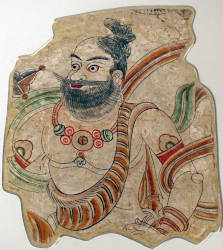
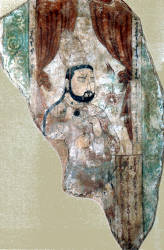
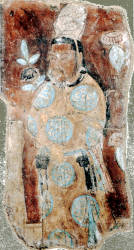
- See also
 Search DuckDuckGo for "Bezeklik Thousand Buddha Caves"
Search DuckDuckGo for "Bezeklik Thousand Buddha Caves" Google Earth Placemark
Google Earth Placemark OpenStreetMap
OpenStreetMap Bezeklik Caves - Wikipedia (visited: 26-JAN-2025)
Bezeklik Caves - Wikipedia (visited: 26-JAN-2025) Bezeklik Thousand Buddha Caves (visited: 31-JAN-2025)
Bezeklik Thousand Buddha Caves (visited: 31-JAN-2025) Bezeklik Thousand Buddha Caves - Exquisite Murals & Profound Buddhist Culture (visited: 31-JAN-2025)
Bezeklik Thousand Buddha Caves - Exquisite Murals & Profound Buddhist Culture (visited: 31-JAN-2025) China: Bezeklik Caves, Gaochang, Tuyugou Village 2019 (visited: 31-JAN-2025)
China: Bezeklik Caves, Gaochang, Tuyugou Village 2019 (visited: 31-JAN-2025) Bezeklik Thousand Buddha Caves Travel Guide (visited: 31-JAN-2025)
Bezeklik Thousand Buddha Caves Travel Guide (visited: 31-JAN-2025) Central Asian Buddhism: Turfan and the Bezeklik Thousand Buddha Caves (visited: 31-JAN-2025)
Central Asian Buddhism: Turfan and the Bezeklik Thousand Buddha Caves (visited: 31-JAN-2025)
 Index
Index Topics
Topics Hierarchical
Hierarchical Countries
Countries Maps
Maps